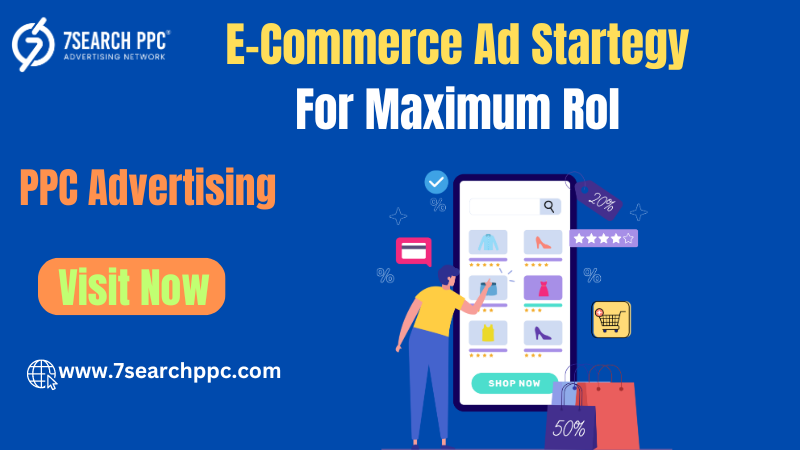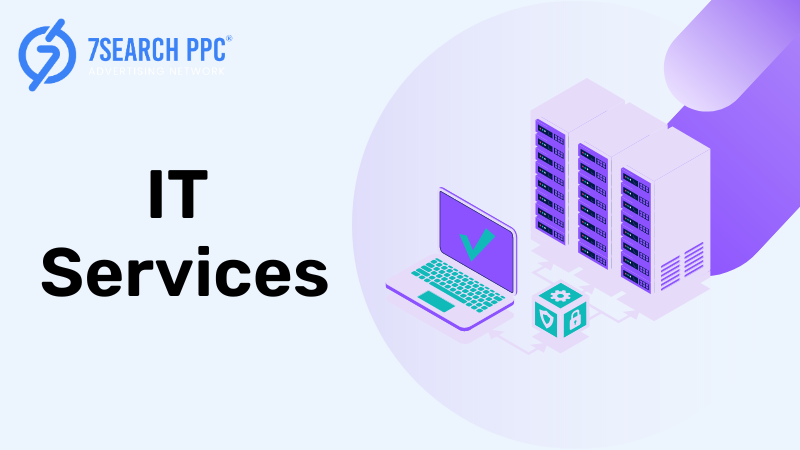In today’s fast-paced digital world, effective e-commerce marketing is more important than ever. With the growing competition, businesses must leverage the right strategies to attract, engage, and retain customers. This guide presents 10 essential e-commerce marketing tips that can help you boost your online business and increase your sales.
1. Leverage SEO for E-Commerce Visibility
Search engine optimization (SEO) is the cornerstone of any successful e-commerce marketing strategy. With SEO, you can increase your website's visibility on search engines like Google, driving organic traffic to your store.
Key SEO Tips for E-Commerce:
- Optimize product pages: Ensure that each product page is optimized with relevant keywords, including long-tail keywords that match what potential customers are searching for.
- Meta descriptions and title tags: Write compelling meta descriptions and title tags for each page to improve click-through rates.
- Fast load times: Ensure your site loads quickly to improve user experience and search engine rankings.
- Mobile optimization: Since many shoppers use their smartphones to shop, optimizing your site for mobile users is essential.
By focusing on these areas, you can significantly enhance your e-commerce marketing and make your site more discoverable.
2. Utilize E-Commerce PPC Services
Pay-per-click (PPC) advertising is one of the most effective ways to get immediate visibility and drive traffic to your online store. E-commerce PPC services allow you to place ads in front of potential customers on platforms like Google, Bing, and social media networks.
Benefits of PPC for E-Commerce Sites:
- Targeted ads: PPC allows you to target specific demographics, ensuring that your ads reach the right audience.
- Cost control: You only pay when someone clicks on your ad, making it a cost-effective way to drive traffic.
- Instant results: Unlike SEO, which takes time to build, PPC offers immediate exposure and fast results.
Popular PPC Ad platforms include Google Ads, Facebook Ads, and Instagram Ads. By integrating e-commerce PPC services into your strategy, you can attract more qualified leads to your site.
3. Create Compelling Ads for E-Commerce
Creating attractive, engaging ads is critical to drawing in customers. Whether it’s display ads, social media ads, or Google Shopping campaigns, your ads need to resonate with your target audience.
Key Elements of Effective E-Commerce Ads:
- Eye-catching visuals: High-quality images or videos that showcase your products can grab attention.
- Clear call to action (CTA): Include strong, action-oriented CTAs like “Shop Now,” “Buy Today,” or “Limited Offer.”
- Promotions and discounts: Highlight any deals or limited-time offers to encourage clicks and conversions.
By creating compelling ads for e-commerce, you’ll boost your chances of capturing customers' attention and leading them to your online store.
4. Leverage Email Marketing
Email marketing remains one of the most powerful tools for engaging with customers, driving sales, and building long-term relationships. From personalized product recommendations to promotional campaigns, emails can have a high return on investment (ROI) if used correctly.
Tips for Successful E-Commerce Email Marketing:
- Segment your audience: Break your email list into segments based on customer behavior, demographics, and preferences to send targeted messages.
- Abandoned cart emails: Set up automated emails to remind customers to complete their purchases if they’ve left items in their cart.
- Offer value: Send out newsletters with exclusive discounts, new product launches, or helpful tips related to your products.
With a well-planned email marketing strategy, you can keep your customers engaged and encourage repeat purchases.
5. Build Trust with Reviews and Social Proof
Social proof is a powerful tool for convincing potential customers that your products are worth purchasing. Customer reviews, ratings, testimonials, and influencer endorsements can help build credibility for your e-commerce store.
Ways to Use Social Proof:
- Encourage customer reviews: Ask satisfied customers to leave reviews on product pages.
- Display testimonials: Feature customer testimonials on your homepage and product pages to increase trust.
- Collaborate with influencers: Partner with influencers to promote your products to their followers, expanding your reach.
By showcasing positive reviews and endorsements, you can foster trust with potential customers and boost conversions.
6. Use an E-Commerce Ad Network for Greater Reach

An e-commerce ad network can help you expand your reach and increase brand awareness by displaying your ads across various websites and platforms. These networks aggregate ad spaces from publishers, allowing you to run targeted campaigns across a broad range of sites.
Benefits of E-Commerce Ad Networks:
- Wide audience reach: Your ads can be shown on multiple websites, increasing your chances of being seen by potential customers.
- Precise targeting: You can target your audience based on demographics, interests, behaviors, and even geolocation.
- Variety of ad formats: E-commerce ad networks offer a variety of formats, including banner ads, native ads, video ads, and more.
By using e-commerce ad networks, you can reach a wider audience and boost your brand’s visibility.
7. Focus on Retargeting Campaigns
Retargeting allows you to show ads to people who have already visited your website but didn’t make a purchase. This tactic keeps your brand top-of-mind, encouraging these users to return and complete their purchase.
Retargeting Best Practices:
- Personalize ads: Show relevant products or promotions based on the customer’s previous interactions with your site.
- Limit the frequency: Don’t overwhelm potential customers with too many ads, as this can lead to ad fatigue.
- Use dynamic ads: Retarget customers with dynamic ads that showcase the exact products they viewed on your site.
Retargeting campaigns are highly effective for e-commerce businesses, helping to recover lost sales and improve conversion rates.
8. Optimize for Mobile Shopping
With mobile commerce (m-commerce) on the rise, optimizing your e-commerce site for mobile users is no longer optional. A mobile-friendly website enhances the user experience and increases the likelihood of conversions.
Mobile Optimization Tips:
- Responsive design: Ensure your website is responsive, meaning it adjusts smoothly to different screen sizes.
- Simplified navigation: Make it easy for mobile users to navigate your site and find what they need.
- Fast loading speeds: Mobile users are more likely to abandon a slow-loading site, so optimize your site speed for mobile devices.
By offering a seamless mobile shopping experience, you can tap into a growing market of mobile users and increase your overall sales.
9. Offer Multiple Payment Options
One of the most effective ways to reduce cart abandonment and boost conversions is by offering multiple payment options. Shoppers prefer convenience, and providing a variety of payment methods can make the checkout process smoother.
Popular Payment Methods for E-Commerce:
- Credit/debit cards: The most common payment method for online shoppers.
- Digital wallets: Offer options like PayPal, Apple Pay, and Google Pay for a faster checkout process.
- Buy now, pay later: Services like Afterpay and Klarna allow customers to split their payments into smaller installments, making it easier for them to purchase higher-priced items.
By offering a range of payment methods, you cater to different customer preferences and remove barriers to purchase.
10. Track and Analyze Performance with Analytics
To continually improve your e-commerce marketing efforts, it’s crucial to track and analyze your performance. With tools like Google Analytics, you can monitor key metrics such as traffic, conversion rates, average order value, and more.
Important E-Commerce Metrics to Track:
- Conversion rate: The percentage of visitors who make a purchase.
- Average order value (AOV): The average amount customers spend per order.
- Bounce rate: The percentage of visitors who leave your site after viewing just one page.
- Cart abandonment rate: The percentage of customers who add items to their cart but don’t complete the purchase.
By analyzing these metrics, you can identify areas for improvement, optimize your campaigns, and ultimately drive more sales.
Conclusion
E-commerce marketing is multifaceted, requiring a combination of strategies to drive traffic, increase conversions, and retain customers. By leveraging SEO, PPC, compelling ads, email marketing, and retargeting, as well as optimizing for mobile and providing a seamless checkout experience, you can set your e-commerce business up for long-term success.
Utilizing e-commerce advertising networks, tracking performance with analytics, and building trust through social proof further enhance your chances of thriving in a competitive marketplace.
FAQ
What is e-commerce marketing?
Ans. E-commerce marketing involves promoting an online store through digital marketing channels to drive traffic, increase sales, and retain customers. Common strategies include SEO, PPC advertising, email marketing, and social media campaigns.
What are e-commerce PPC services?
Ans. E-commerce PPC services involve pay-per-click advertising campaigns that target specific demographics to drive traffic to an e-commerce site. These ads appear on platforms like Google, Bing, and social media networks, and the business pays only when users click on the ad.
Why is social proof important for e-commerce?
Ans. Social proof, such as customer reviews, testimonials, and influencer endorsements, helps build trust with potential customers. It convinces them that others have had positive experiences with your products, increasing the likelihood of purchasing.
What is an e-commerce ad network?
Ans. An e-commerce ad network is a platform that connects advertisers with publishers, allowing businesses to run ads across multiple websites. This helps increase brand visibility and reach a wider audience.
How can I improve my e-commerce site’s mobile experience?
Ans. To improve mobile shopping, ensure your website is responsive, loads quickly, and easily navigates. Simplify the checkout process and provide mobile-friendly payment options like digital wallets.




